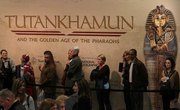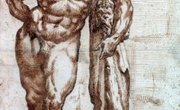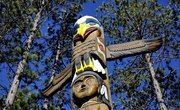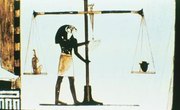Today, few people believe that winged, fire-breathing dragons actually exist. To people of the Middle Ages, though, dragons were real and very frightening. Stories of dragon slayers, such as Saint George, tell tales of men battling the ferocious creatures. Dragons weren't just fodder for fiction -- the beasts also appeared in written compilations of animals, called bestiaries, and books of natural history. Bestiary books often included a description and illustrations of the creatures.
Christian Beliefs
In the Middle Ages, most people believed that all dragons were evil, deadly and an omen of terrible things to come. To Christians, they were a symbol of sin or Satan. These beliefs likely came from the Bible's book of Job, which describes a terrifying beast called the Leviathan. According to the biblical description of the Leviathan, smoke poured from the creature's nostrils and fire spewed from its mouth. The Leviathan's scales were described as impenetrable double rows of shields.
Description of Dragons
Medieval tales depict dragons as huge, scaly beasts, often with bat-like wings and large claws. Most accounts gave them four legs, but some descriptions said they had only two. Dragons were thought to eat cattle and sheep. They also enjoyed snacking on humans, especially young maidens. People believed that dragons lived in caves or in the mountains, where they guarded gold and other treasures. The Aberdeen Bestiary, penned in the early 1500s, described dragons as the largest creatures on earth. The description stated that dragons killed elephants by suffocating them with their tail.
Saint George the Dragon Slayer
The story of Saint George is perhaps the best-known tale of man fighting against dragons. In 1483, the story was published and mass-circulated in a book titled, "The Golden Legend." According to the story, George came to the city of Silene in Libya, where he heard of a dragon that terrorized the land. The townspeople fed the dragon sheep to keep it at bay. When the sheep were gone, they offered humans as sacrifice until only the king's daughter remained. Just before the daughter was sacrificed, George bound the dragon and cut off its head with one blow.
Gerolde the Dragon Hunter
Gerolde isn't as well-known as Saint George, but stories paint him as an admirable dragon slayer. Gerolde lived in the Dark Ages. He and his band of followers traveled the land, speaking against evil and destroying dragons wherever they went. His shining armor reflected the sun's rays, blinding dragons so that he could easily kill them with his lance. Gerolde received many ribbons and garlands from fans. One day, he decided to make a jacket from the ribbons. The jacket, however, prevented his armor from blinding a dragon as it had done before. The dragon breathed fire at Gerolde, turning him into a pile of ash.
Related Articles
References
Writer Bio
Melissa King began writing in 2001. She spent three years writing for her local newspaper, "The Colt," writing editorials, news stories, product reviews and entertainment pieces. She is also the owner and operator of Howbert Freelance Writing. King holds an Associate of Arts in communications from Tarrant County College.











